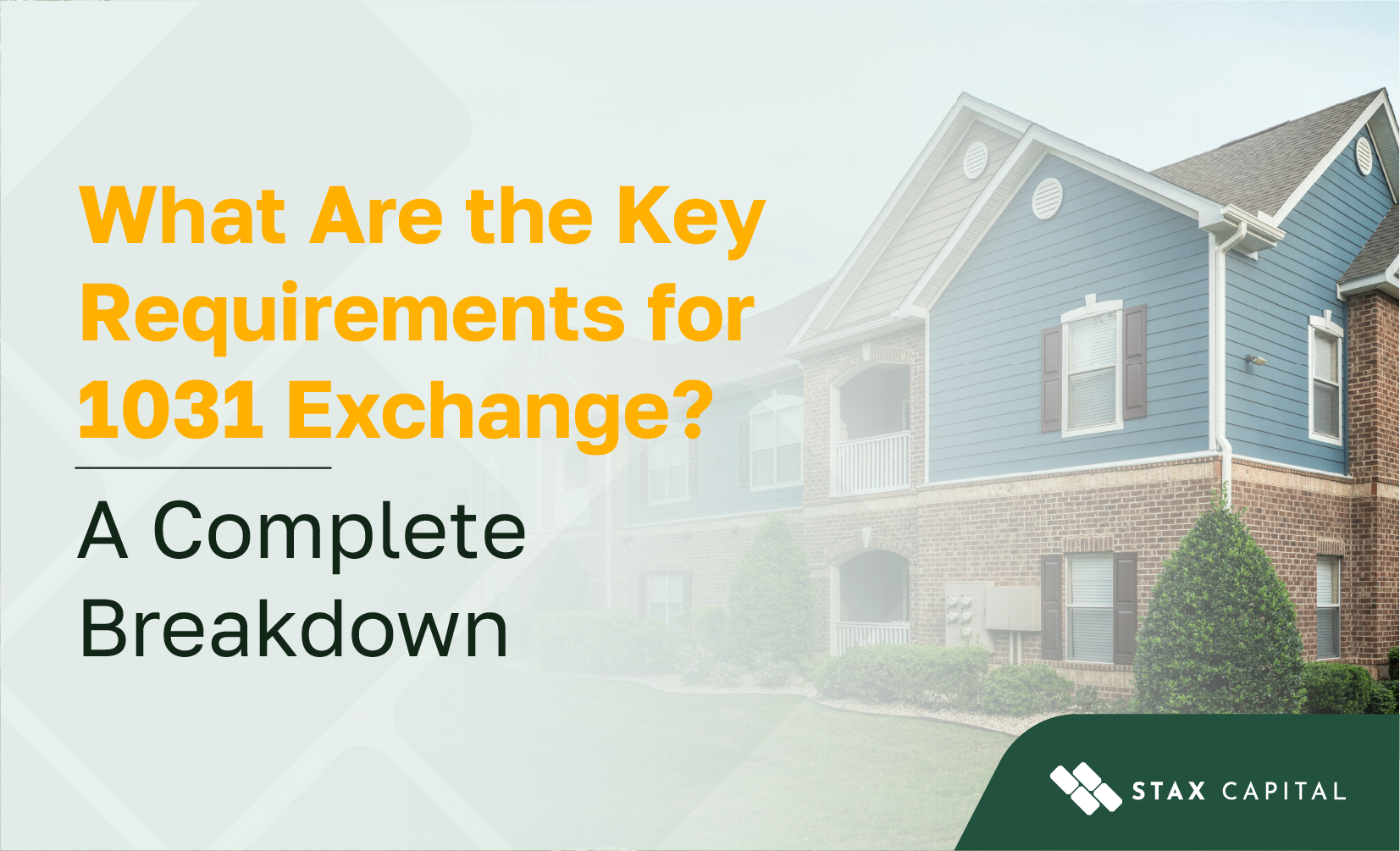What are the 1031 Exchange rules?

Exchange Tips
Investing in real estate is one of the best ways to diversify your portfolio. That said, you have to know how to navigate the world of real estate investment to make appropriate investment decisions.
A familiar term for real estate investors is a 1031 exchange, a handy tax tool allowing you to change the form of your real estate investment without losing the original property's tax-deferred status.
That said, in order for such a transaction to be considered valid, you have to abide by strict 1031 exchange rules. Here's a look at how the rules work for such an exchange and a few special cases that you might encounter as an investor.
What Is a 1031 Exchange?
A 1031 exchange, named for the Internal Revenue Code Section 1031, is a provision of the tax code allowing investors to defer paying federal capital gains taxes on business or investment properties and some exchanges of real estate.
This is thanks to the Starker Loophole or like-kind exchange.
Let's say you have an investment property that has been growing in a tax-deferred state, so you don't need to pay capital gains taxes on it. If you wanted to sell that investment property and replace it with a new one, most such swaps are taxable.
However, if your exchange meets the criteria of a 1031 exchange, you'll have limited or no tax at the time of the exchange and the replacement property can continue to grow in a tax-deferred state.
The Basics of 1031 Exchange Rules
In order to qualify for a 1031 exchange, the replacement property must be "like-kind" which is a rather vague legal term. According to the IRS, properties are like-kind if they are of the same nature or character, even if they are of differing quality or grade.
Under this logic, an apartment building is considered like-kind to another apartment building. However, a house inside the U.S. is not considered like-kind to a similar house outside the U.S.
As long as you comply with the rules of 1031 exchange, the property sale will qualify for tax deferral and all taxes will be deferred. If the exchange does not comply with 1031 exchange guidelines such as 45 day identification rules, your property loses its tax-deferred status and taxes come due in the current tax year.
Updated Rules (The Tax Cuts and Jobs Act)
The passage of the 2017 Tax Cuts and Jobs Act changed the rules slightly for 1031 exchanges.
Under the Act, personal or intangible property such as machinery, equipment, artwork, patents, collectibles, and intellectual property do not qualify for nonrecognition of gain or loss as like-kind exchanges. Only real property may be used for this purpose, i.e. real estate and the buildings and land attached to it.
Special Rules
Beyond the basics of 1031 exchanges, there are certain rules applying to unique cases.
For example, special rules apply to depreciable property, i.e. any property eligible for tax and accounting purposes to book depreciation under the Internal Revenue Code. This includes things like:
- Real estate (except land)
- Vehicles
- Computers
- Office equipment
- Heavy machinery
If a depreciable property is exchanged, it can trigger a profit called depreciation recapture which is taxed as ordinary income.
Here are a few other unique 1031 exchange rules to watch for.
Delayed Exchanges and Timing
Under the classic 1031 exchange, two people agree to swap properties. No fuss and feathers. Simple, right?
Not quite.
The odds of finding someone who wants to exchange a highly similar property with you can be quite slim. For this reason, most 1031 exchanges are technically delayed or Starker exchanges.
In these cases, you need a qualified intermediary who holds the proceeds for you after you sell your investment property and then uses those proceeds to buy the new investment property on your behalf. This is viewed as a regular swap, but it has two timing rules: the 45-day rule and the 180-day rule.
45-Day Rule vs. 180-Day Rule
The 45-day rule applies first and kicks in as soon as you sell your original property.
Once the property is sold, the proceeds must go to your intermediary. If the money passes to your hands, it will spoil the exchange. In addition, under the 45-day rule, you have to designate a replacement property within 45 days of the original sale.
This must be performed in writing to your intermediary, specifying the property you plan to acquire. You are not obligated to close within 45 days. You can designate up to three potential properties. As long as you close on one of them, the replacement property will remain tax-deferred.
However, you are obligated to close on one of the properties within 180 days, thus the 180-day rule. If you fail to close on one of the replacement properties within that window, your new property loses its tax-deferred status, as outlined in the rules for 1031 exchange.
Navigating Your Property Investment
Knowing your way around 1031 exchange rules opens up a new world of real estate investment possibilities for savvy investors. That said, you have to know what you're doing before you try to embark on a 1031 exchange--otherwise, you may find yourself facing steep taxes you weren't prepared for.
That's where we can help.
We know that investment can often feel like a maze. We also know it doesn't have to. We put financial freedom first by helping you discover potentially suitable investment opportunities with lower minimum investments and totally passive management.
Sound like the right fit for your investment needs? If so, get in touch today to learn more.



Share: